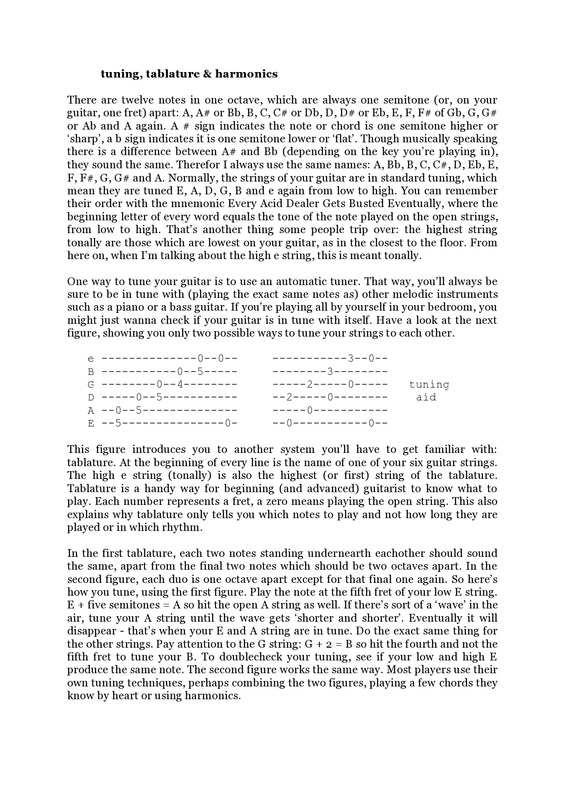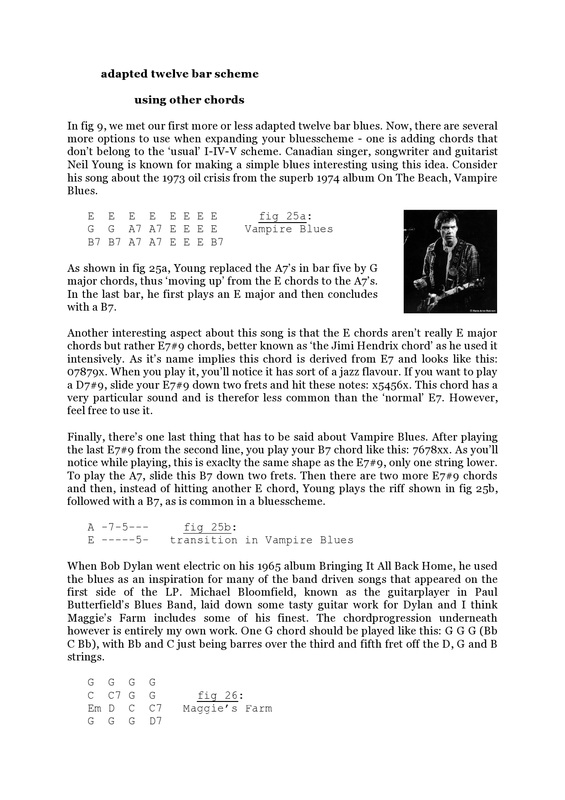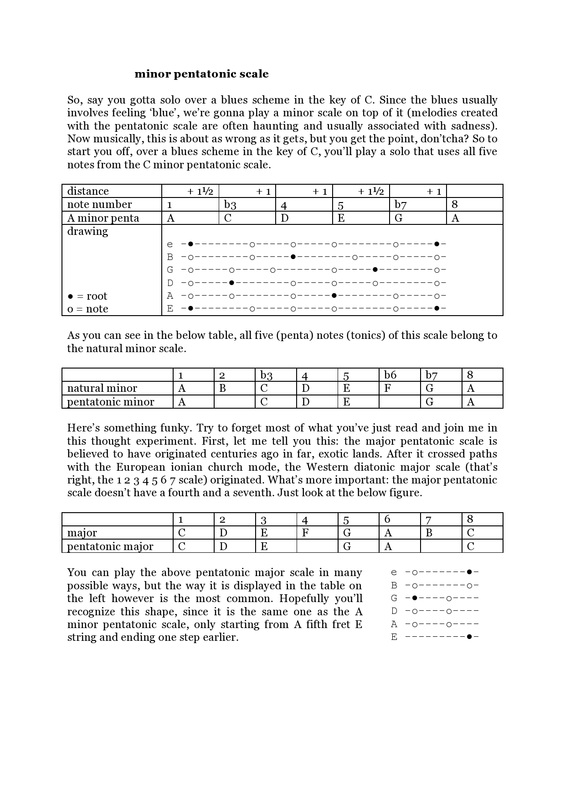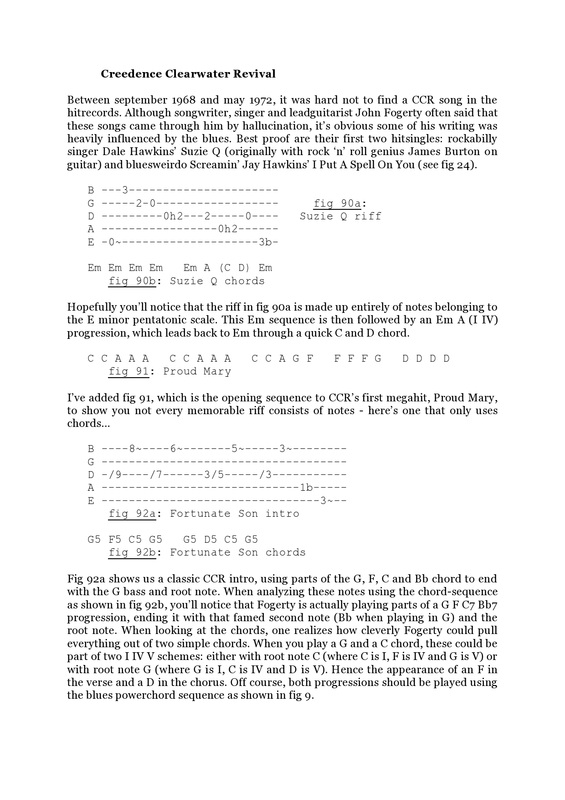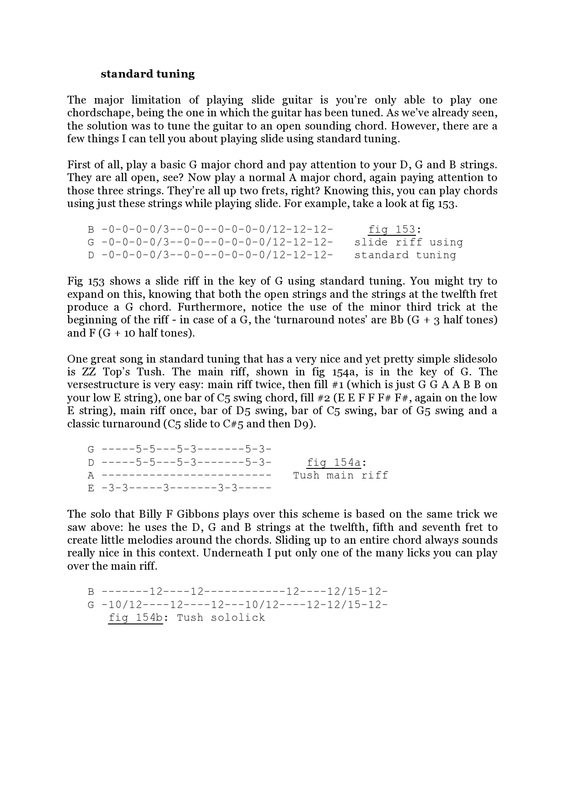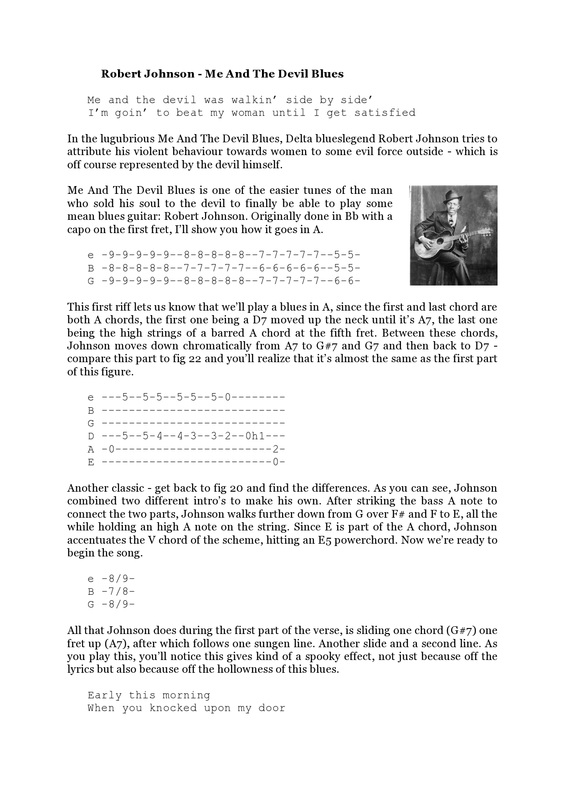How to play a basic blues
I started writing this book when I started playing the guitar and I continued updating it every now and then. The result of six years of playing the guitar and in particular the blues is now in your hands. I’m not saying I’m a pro guitarplayer who can play anything you hand him. Not even close. But maybe that’s one of the good things about this book. At times it may get a bit theoretical and sometimes you’ll have to stretch your fingers a bit harder than you’re used to but I know what you’re feeling ‘cause I’ve been through it too - and not that long ago, as a matter of fact.
However, this is not a true ‘starters’ book either since I assume you can play a bit of chords and know your fretboard a little. If not, there are plenty of other books which will introduce you to the magical world of the guitar. Furthermore, I’ll quickly review the basic chords and techniques in the introduction. From there on, I’ll lead you through other chords and more complex techniques.
As you will see, the book is largely divided into six chapters. First of all, I start with a short history of the blues. You’ll meet some names which the casual listener might have heard about and others which maybe even musicfans won’t recognize. One of the most important things in bluesplaying (and probably playing music in general) is listening, not only to yourself or what the rest of the band is playing but also listening to those who came before you. You’ll learn a lot just by putting on a CD by B.B. King, John Lee Hooker, Muddy Waters or Chuck Berry. As I said before, this chapter also includes a quick repetition on tuning your guitar, reading tablature, playing the basic chords and mastering some basic techniques. For a bit more on tablature notation, check this page.
However, this is not a true ‘starters’ book either since I assume you can play a bit of chords and know your fretboard a little. If not, there are plenty of other books which will introduce you to the magical world of the guitar. Furthermore, I’ll quickly review the basic chords and techniques in the introduction. From there on, I’ll lead you through other chords and more complex techniques.
As you will see, the book is largely divided into six chapters. First of all, I start with a short history of the blues. You’ll meet some names which the casual listener might have heard about and others which maybe even musicfans won’t recognize. One of the most important things in bluesplaying (and probably playing music in general) is listening, not only to yourself or what the rest of the band is playing but also listening to those who came before you. You’ll learn a lot just by putting on a CD by B.B. King, John Lee Hooker, Muddy Waters or Chuck Berry. As I said before, this chapter also includes a quick repetition on tuning your guitar, reading tablature, playing the basic chords and mastering some basic techniques. For a bit more on tablature notation, check this page.
Afterwards, I’m afraid I’ll have to give you some theoretical foundations before we can start playing. In the second chapter, I’ll show you the major scale, explain everything about intervals, show you how to build any imaginable chord and tell you which chords belong together. This may seem boring, but it’ll help you to understand what you’re doing in the next chapters much better. And if you really don’t wanna know, there’s no one who’s gonna blame you for skipking this one and proceeding with another chapter...
The third chapter has the smooth title ‘the blues from a harmonic point of view’, the third chapter takes a ‘melodic point of view’. All you really got to remember is: harmonic means chords, melodic means notes. Got it? So in the third chapter, you will meet the twelve bar blues scheme, seventh chords, powerchords, swing chords, adapted and minor schemes and off course the intro and outro to a bluesscheme. Obviously, these are the very basics: singing and soloing the blues with nothing going on behind you would seem to be pretty dumb (at first glance maybe - just check out Son House, he seemed to be OK singing all by himself...).
In chapter four I try to tell you everything I know about playing blues- and rocksolo’s. You’ll encounter the major, minor and pentatonic scales and you’ll learn which of these scales can be used for the blues and how to expand them. I’ll show you a solo acoustic blues which wil impress your girl- or boyfriend immensely. Afterwards you’ll learn some new techniques and how to play a prime solo, using famous example as played by Eric Clapton, Angus Young, Jimmy Page and Brian Setzer.
I think chapter five is the most fun one. In this section, I’ll lead you through rock ‘n’ roll history by showing you the coolest guitarriffs while giving you tips to create your own. Once you finished this part, Whole Lotta Shakin’ Goin’ On, Whole Lotta Love and Whole Lotta Rosie will have no secrets for you anymore. From Muddy Waters to the Red Hot Chili Peppers, from Jimi Hendrix to Pink Floyd, you’ll meet ‘em all and learn how those monsterriffs are created.
Slideguitar has always been a key ingredient when it comes to bluesplaying. In chapter six I’ll show you some different ways of tuning your guitar so you can play along with some pretty cool slide licks.
Finally, in chapter seven we’ll dissect some of the greatest blues (inspired) songs ever, by artists such as Robert Johnson, Led Zeppelin and the Rolling Stones. Once you have completed this chapter, you’ll be able to play each and every of these songs (quasi) note perfect, allowing you to add your own idea’s.
I’ve put everything I wrote down but then decided wasn’t really useful in the course but still fun to read in the appendices. After some more theoretical information (on the modes and the circle of fifths among others), you’ll learn to play a jazzy blues (yukkie!, you might think, but believe me: it’s fun) and the riffs of some of (in my opinion) the best guitarists of the eighties and the nineties. I really had fun writing the biographies of the ten most important bluesicons and some of the other bluesartists, plus adding some of the records that helped to define the blues.
So, does this mean you have to read this book from the first page until the last one if you want to ‘get it’? There’s an easy answer to that one: no. This is not a book in which you have to play along with a CD page after page in order not to lose track. Although you will understand what you’re doing far better when you read the entire book, it’s also possible to skip parts and bits if you get fed up with me (which I won’t blame you for, honestly). You first wanna pump out Purple Haze on your Marshall stack and then read about the minor blues progressions? Fine with me. Go ahead. I once was that impatient too and unlike the other guys, I don’t think that’s a flaw; instead, I believe it’s a huge advantage.
So have fun, see what you like, start there and if you don’t get it, just turn back a few pages and you’ll pick up easily.
Enjoy!
